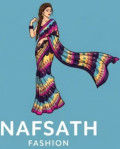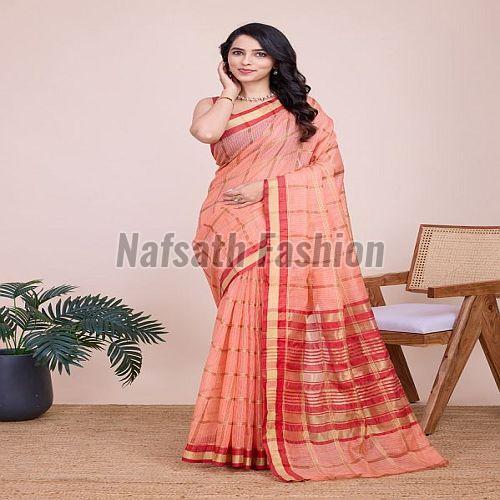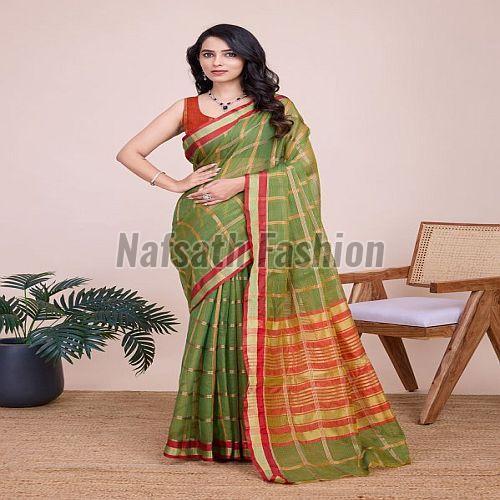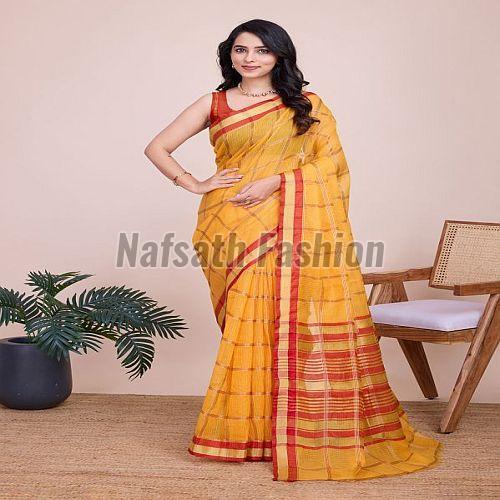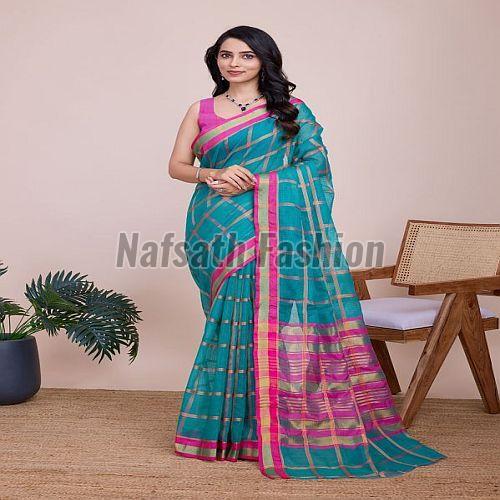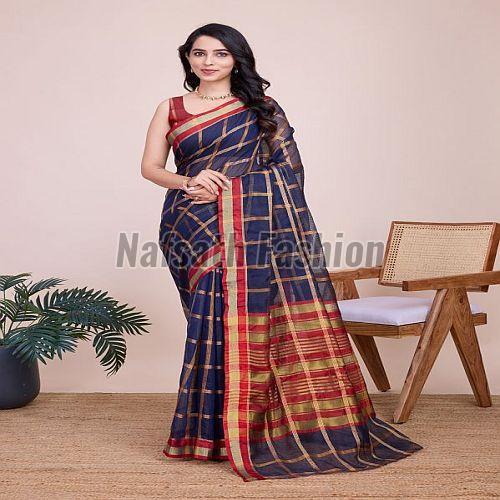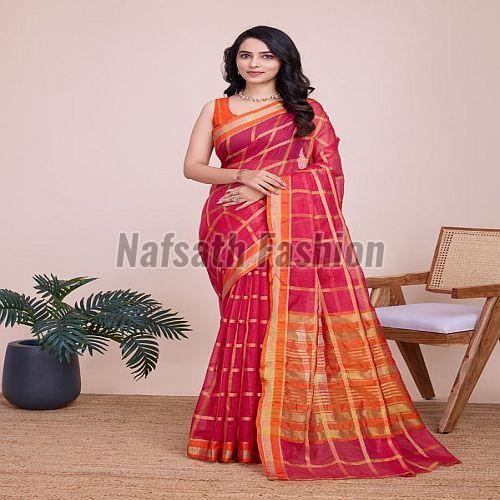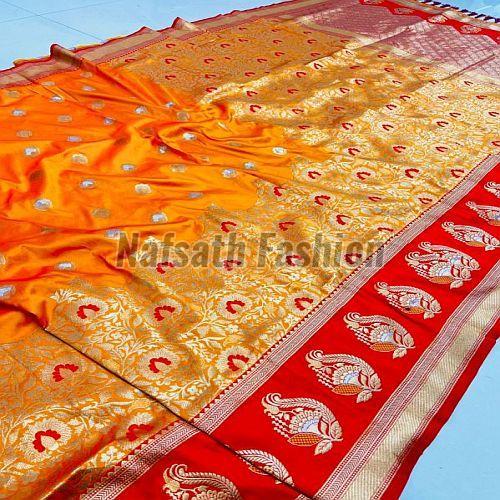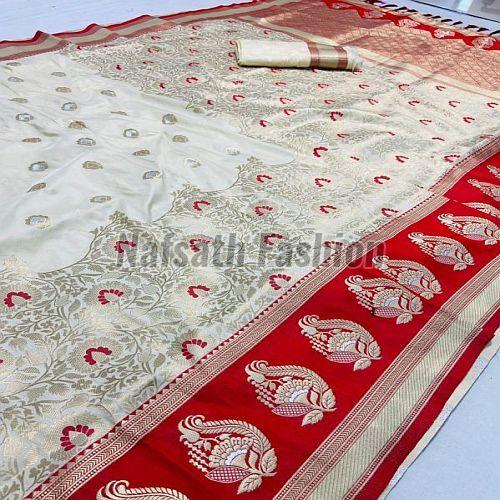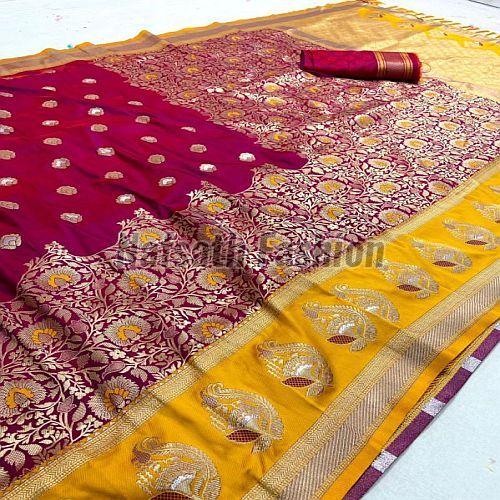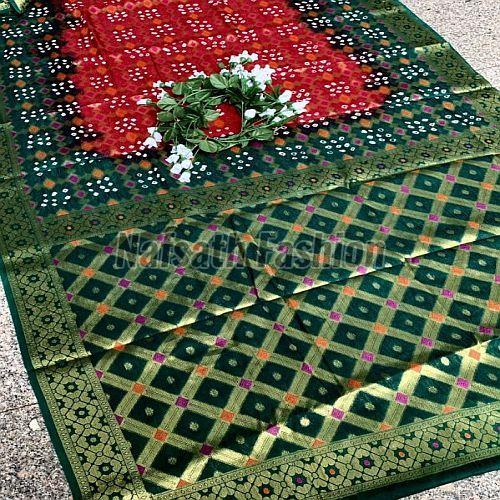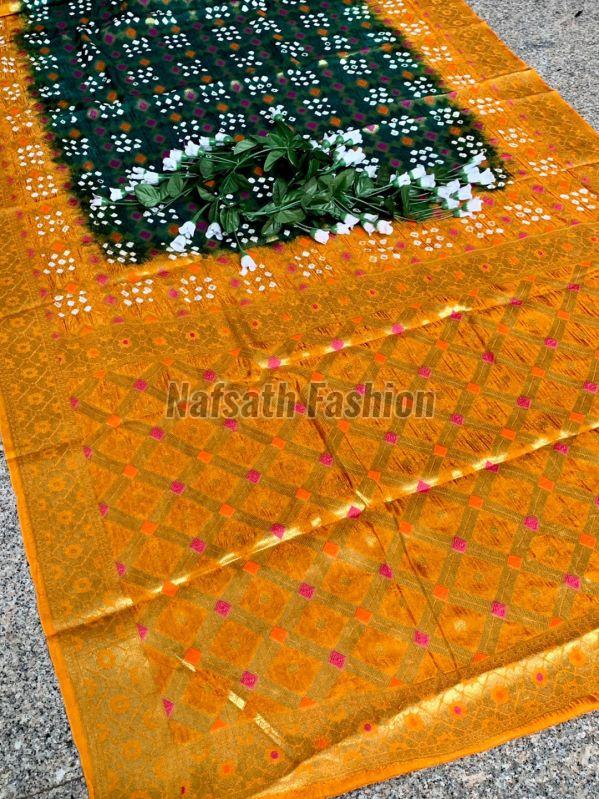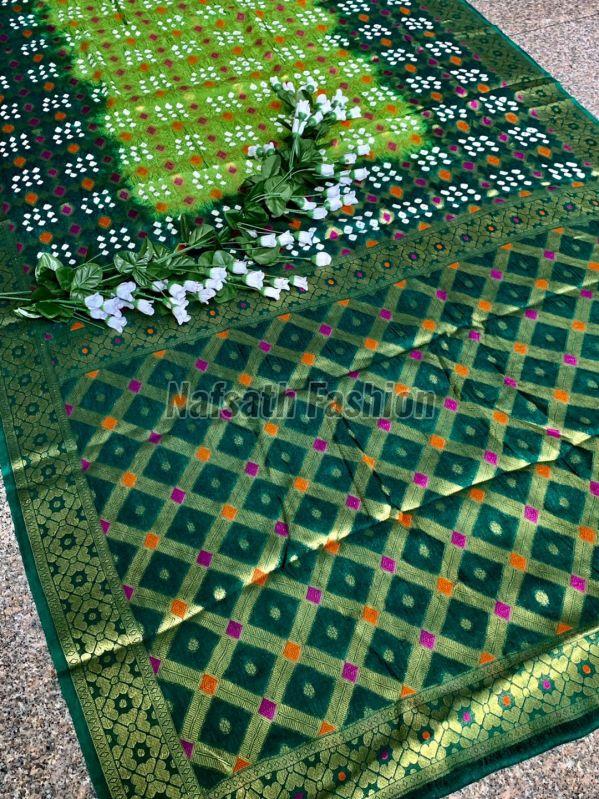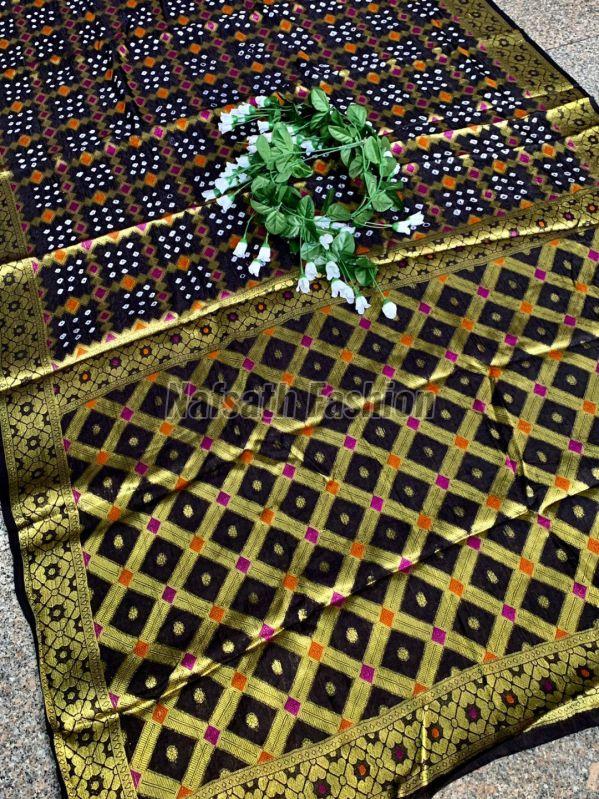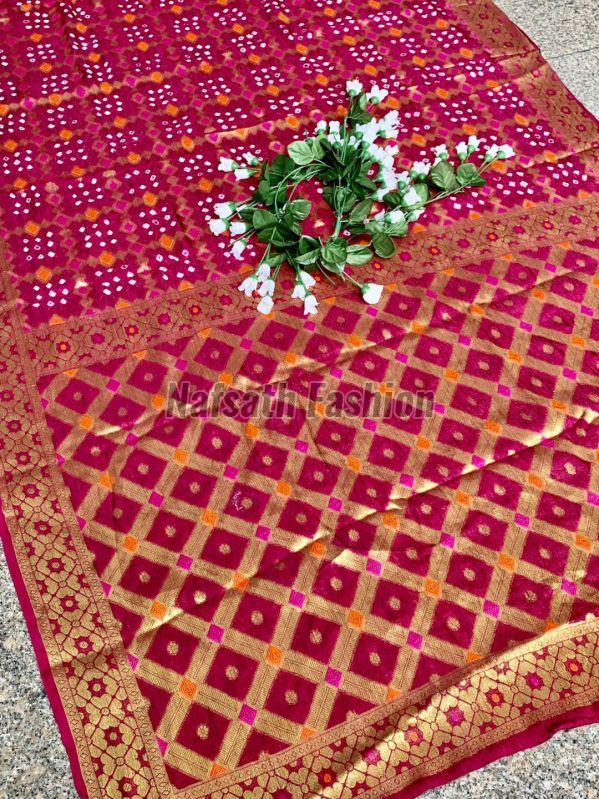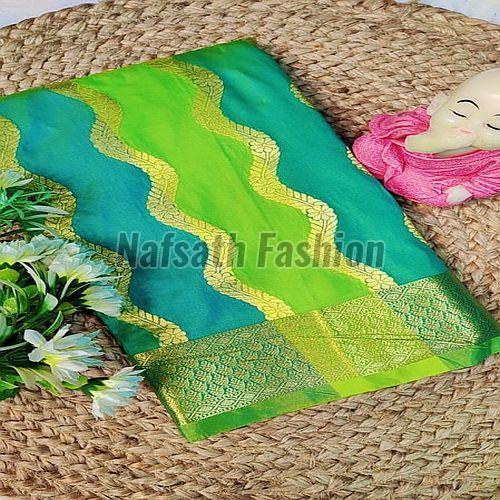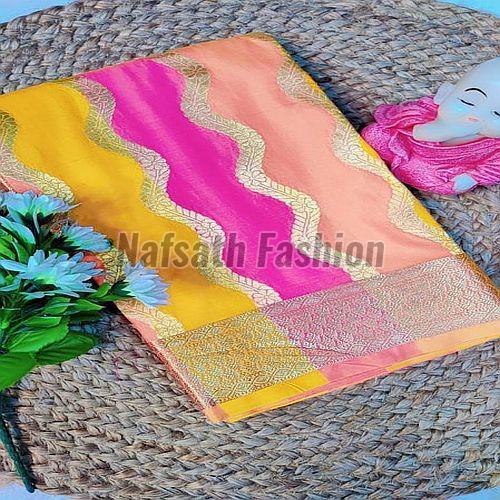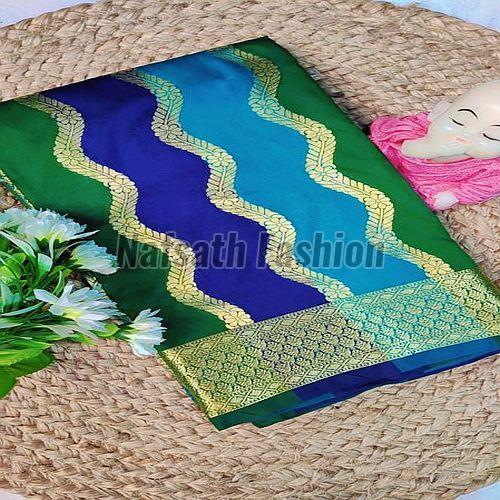Zari Work Saree
Leading Exporters, Wholesaler, Retailer and Trader of Kota Doria Zari Weave Saree, Ladies Zari Work Silk Saree, Zari Work Bandhani Silk Saree and Zari Work Chanderi Katan Silk Saree from Kanchipuram.
| Business Type | Exporter, Supplier, Retailer, Trader |
| Color | Available in Different Color |
| Material | Cotton And Silk Blend |
| Ethnic Region | Indian |
| Saree Length | 6.3 Meter |
| Pattern | Printed |
| Blouse Stitch Type | Unstitched |
| Designs | Various Designs Available |
The fabric is a fine blend of cotton and silk threads woven in a way that creates small, airy square checks known as 'khats'. The cotton provides strength, while the silk adds a touch of sheen and transparency. The ratio of cotton to silk can vary.
- Weave: They are traditionally handwoven on pit looms using the throw-shuttle technique. The unique checkered pattern is achieved by carefully interlacing the cotton and silk threads with varying thicknesses.
- Lightweight and Breathable: The open weave and the blend of cotton and silk make these sarees incredibly light and comfortable, especially in warm climates.
- Transparency: The sarees have a slightly sheer or translucent quality due to the open weave and the silk content.
- Designs and Motifs: While the base fabric has the characteristic checks, Kota Doria sarees can be adorned with various designs, including:
| Business Type | Exporter, Supplier, Retailer, Trader |
| Pattern | Printed |
| Work | Zari Work |
| Saree Length | 6.3 M (with Blouse Piece) |
| Material | Silk |
| Color | Available in Different Color |
| Care Instructions | Dry Clean Recommended To Preserve Zari Work |
- Real Zari: Made with genuine gold and silver threads. These are the most expensive and were traditionally used for royalty.
- Semi-Real Zari: Uses a base of copper or silver coated with gold. This offers a more affordable alternative to real zari while still maintaining a good luster.
- Tested Zari (or Imitation Zari): Uses metallic threads made from copper or other base metals that are electroplated with a golden or silvery finish. These are more cost-effective.
- Metallic Zari: Modern zari made from synthetic metallic yarns, which are lightweight and tarnish-resistant.
- Zardozi: A heavy and elaborate type of zari embroidery that often incorporates beads, sequins, and other embellishments to create three-dimensional designs.
- Kamdani: A lighter form of zari work using flattened metallic wire to create delicate patterns, often seen on lighter fabrics.
- Mina Work: Zari work that resembles enamel designs, often using gold threads to create vibrant patterns.
- Gota Work: A type of zari application where woven gold or silver ribbons (gota) are cut into shapes and appliqued onto the fabric, often with further embellishment using zari thread.
| Business Type | Exporter, Supplier, Retailer, Trader |
| Wash Care | Machine Wash |
| Ethnic Region | Indian |
| Speciality | Easy Wash, Shrink-Resistant |
| Blouse Stitch Type | Unstitched |
| Set Content | With Blouse Piece |
| Pattern | Printed |
| Work Type | Zari Work |
| Fabric | Bandhani Silk |
| Color | Available in different color |
| Saree Length | 6.3 Meter |
The most distinctive feature is the meticulous process of tying small knots all over the fabric before dyeing. Skilled artisans use their fingernails to pinch and tie the fabric tightly.
- Intricate Patterns: A variety of patterns are created depending on how the fabric is tied. Common motifs include dots, circles, squares, waves, and stripes. Traditional designs often have names like Ekdali (single dot), Trikunti (three knots), Chaubundi (four knots), and Dungar Shahi (mountain-shaped).
- Vibrant Colors: Bandhani fabrics are typically dyed in vibrant colors such as red, yellow, blue, green, and black. Natural dyes were traditionally used, but synthetic dyes are also common now.
- Lightweight Fabrics: Bandhani sarees are often made on lightweight fabrics like cotton, silk, georgette, and chiffon, making them comfortable to wear.
- Cultural Significance: Bandhani sarees hold cultural significance, particularly in Gujarat and Rajasthan. They are often worn during festivals, weddings, and other auspicious occasions. In some communities, the color of the Bandhani saree indicates a woman's marital status.
- Regional Variations: Different regions have their unique styles and patterns of Bandhani. For instance, the Bandhani from Kutch and Saurashtra in Gujarat is particularly famous for its intricate detailing and vibrant color combinations.
| Business Type | Exporter, Supplier, Retailer, Trader |
| Saree Length | 7.5 Meter |
| Work Type | Zari Work |
| Pattern | Designer |
| Set Content | With Blouse Piece |
| Blouse Stitch Type | Unstitched |
| Feature | Elegant Design, Shrink-Resistant |
| Ethnic Region | Indian |
| Wash Care | Machine Wash |
| Fabric | Chanderi Katan Silk |
| Color | Available in Different Color |
Key Features:
- Silk Fabric: The base of a Banarasi saree is typically high-quality silk, often mulberry silk, known for its fine texture, natural sheen, and durability. Different types of silk like Katan (pure silk), Organza (Kora), Georgette, Shattir, Tussar, and Dupion can be used, each offering a unique look and feel.
- Zari Woven Work: The defining characteristic is the use of zari threads to create elaborate patterns and motifs that are interwoven directly into the fabric during the weaving process. This is different from embroidery, where the zari is added after the fabric is woven.
- Intricate Designs: The designs often draw inspiration from Mughal art, nature, and local traditions. Common motifs include:
- Floral and Foliage: Flowers (like lotus, marigold, jasmine), leaves, and creepers (bel buti).
- Paisley (Ambi/Kalga): A teardrop-shaped motif symbolizing fertility and life.
- Animals and Birds: Peacocks, elephants, horses, and mythical creatures like the Makara.
- Geometric Patterns: Spirals, diamonds, hexagons, and stripes.
- Architectural Motifs: Inspired by the temples and palaces of Varanasi.
- Opulent Look: The combination of the silk and the shimmering zari work gives Banarasi sarees a rich, grand, and celebratory appearance, making them popular choices for weddings, festivals, and special occasions.
- Heirloom Quality: Authentic Banarasi silk sarees with zari woven work are often considered heirlooms due to their fine craftsmanship and enduring beauty.
Weaving Techniques:
The zari weaving in Banarasi sarees involves skilled artisans using various techniques on traditional handlooms or power looms. Some notable techniques include:
- Kadhua (Kadwa/Kadhua): A complex and laborious technique where each motif is woven separately, requiring extra spools of thread. This creates a non-cutwork design with a raised, embossed appearance.
- Phekwa (Cutwork): A faster technique where the weft threads are interlaced to create motifs, with loose threads on the back that are later cut.
- Tanchoi: A weaving style using one or two warp colors and multiple weft colors to create self-designs with minimal floats on the back.
- Kadiyal: A technique used to create borders in sharply contrasting colors to the body of the saree.
- Jangla: An old technique involving continuous patterning (jaal) that covers the entire body of the saree with dense designs.
